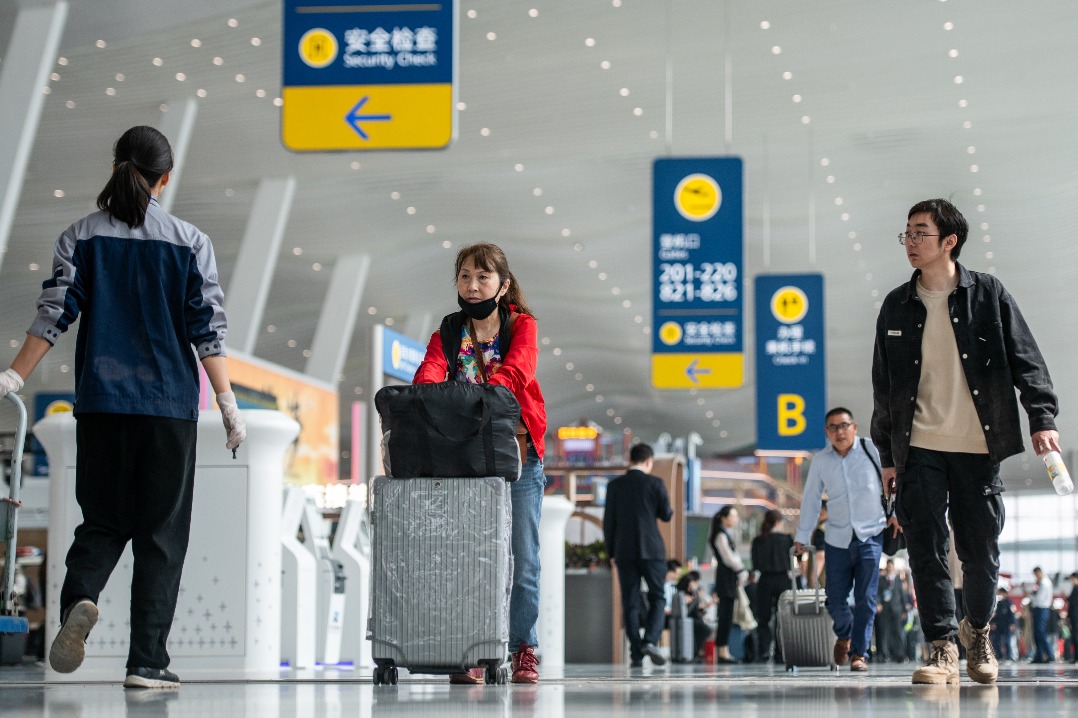Space might not yet be the place for tourists
By Barry He | China Daily Global | Updated: 2021-09-13 09:40

News that the Federal Aviation Administration in the United States had grounded Virgin Galactic suborbital flights highlighted the complexities of space flight in 2021.
Noting a flightpath violation concern, the latest incident indicates that commercial space travel is still in its absolute infancy and that challenges remain that research teams must face and overcome, in both the West and Asia, if the industry is to flourish.
In July, the space venture Virgin Galactic ran into just such an issue, encountering what was known as a glide cone warning. Around 20 miles in the air, Richard Branson's rocket was traveling at twice the speed of sound when it started to veer off course.
The leading nose of the ship was not quite vertical and, if the flight path was not changed, a potentially complicated and hazardous emergency landing may have been necessary.
The decision was quickly made in the heat of the moment by pilots Dave Mackay and Mike Masucci, to carry on with the engine burn and correct the trajectory. By doing so, they flew out of their designated airspace, an area kept clear for the safety of other aircraft.
It is estimated that around 1.4 percent of all Russian and US crewed space missions have resulted in fatalities. These statistics are sobering, and come from a history of state-funded manned space flights stretching back several decades.
The new pioneers of space are the privately funded ventures of the likes of Branson's Virgin Galactic, and Blue Origin and SpaceX run by Jeff Bezos and Elon Musk, respectively.
The caliber of people on board could be a world away from those on board NASA flights.
Instead of highly trained individuals with typically decorated military backgrounds, this new private sector is aiming at so-called space tourists-wealthy individuals looking for an exotic adventure.
Being able to safely deliver an experience of what is essentially a $100,000 bungee jump relies on a safe track record to protect profits.
Many companies are increasingly looking toward the Chinese market with the number of wealthy and adventurous Chinese tourists continuing to grow.
In the US, where the majority of private space operations are taking place, the Federal Aviation Administration, or FAA, is responsible for regulating the safety of such endeavors. Whether it be preventing collisions with other air traffic or protecting civilians on the ground, setting out standards for an acceptable level of risk is important for what is currently inherently an extremely dangerous activity.
According to the FAA, this would be no more than one expected casualty per 10,000 missions. While this is still a large contrast with traditional major airline aviation, where there is a fatality rate of 0.005 per 100,000 flight hours, according to the US National Safety Council, it would be in line with traditional extreme sports, such as paragliding or skydiving.
For the foreseeable future at least, it is unrealistic to assume that space tourism can be as safe as taking a train or a taxi. However, technology continues to improve and through innovation and trial and error, the efficiency and knowledge of safe practice will continue to improve.
An openness to admit faults in test flights is equally important. Private companies may be inclined to keep a lid on any shortcomings for fear of investors getting cold feet; however, it is vital in research and development stages for weaknesses to be discussed and addressed by an international community of developers. This is why regulators must oversee industry activity, and ensure that space tourism does not become a wild west of obtuse commercial promises to clients.
In the early days of aviation, fatalities were common and accidents in proto-propeller aircraft made from fabric and wood were common. The first such incident occurred in a hot air balloon in France, killing its inventor, Jean-Francois de Rozier, in the 18th century.
Technology moves fast to improve safety and accessibility, and, in tandem with attentive regulation, this is a recipe for success.























